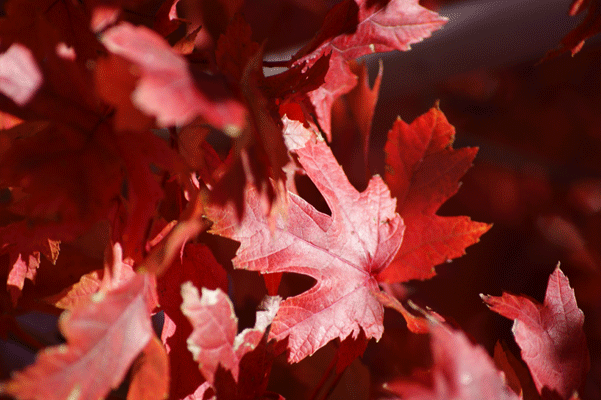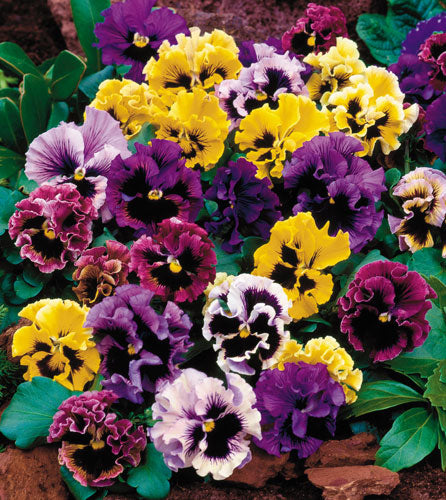 As temperatures begin to dip, it may be tempting to take a break from gardening and simply let Mother Nature take her course. But with just a little effort, we can give our October gardens some autumn color and great jump-starts for spring blooms to come. Below are my top 10 local tips for better local landscapes.
As temperatures begin to dip, it may be tempting to take a break from gardening and simply let Mother Nature take her course. But with just a little effort, we can give our October gardens some autumn color and great jump-starts for spring blooms to come. Below are my top 10 local tips for better local landscapes.
- Get rid of diseased leaves. Remove any diseased leaves from flowerbeds and dispose of them in the garbage, not the compost pile. If left on the soil all winter, the tainted leaves will re-inoculate the plants with disease spores when spring comes around. In the garden cleanliness IS next to godliness.
- Spread the gold around. The small leaves from trees such as honey locust, birch, ash, ginkgo, and flame maple are like gold for our gardens. Spread under shrubs and over exposed soil, the leaves will degrade into mineral nutrients that worms then will turn into fertilizer. Shred the leaves and store them in bags to use as really economical winter mulch.
- Scatter seeds from annuals wherever you’d like them to bloom. You may be surprised that hardy annuals such as larkspur, poppy, Indian paintbrush, cleome, and cosmos often take root from seeds that are sown in autumn. Cold weather usually doesn’t kill them, but seems to condition them under that blanket of winter snow.
- Replace summer annuals. After clearing out summer annuals, plant Prescott’s mammoth pansies or violas for a fresh pop of garden color. These winter-lovers show off their blooms through February and then take off with spectacular new blooms in March. Another idea for embracing autumn is to plant flower-less containers using a variety of ornamental cabbages, dusty millers, and kales.
- Plant spring and summer flowering perennials. To plant perennials in autumn, the general rule is to plant six to eight weeks before winter settles in to allow for good root formation. A thick mulch of leaves and evergreen cuttings will help to keep root balls safe from frost. It is best to wait until December, when the soil has frozen thoroughly, before mulching any new plants.
- Divide overgrown perennials. Now is also the time to divide overgrown perennials, including day lilies, hardy geraniums, and irises. The simplest way to do this is to use a sharp shovel and cut directly into them and then replant them right away.
- Fertilize. Use “All Purpose Plant Food” 7-4-4 on everything in the landscape this month. Fertilizing in October is the most important plant feeding of the year, especially for those spectacular native specimens in our yards. Nationally syndicated garden writers will tell us that these natural specimens have been growing on their own for years and don’t need care from their owners/gardeners; but local gardeners know that bark beetle, ips borers, scale, grubs, aspen leaf spot, and tip borers are ferocious threats to our landscapes. With this autumn feeding, homeowners can insure robust plants that can take on nature better than if left alone.
- Continue to water shrubs and trees. To help them get through the winter, it’s important to give shrubs and trees a thorough watering right up until the time that the ground freezes. Keep in mind that fall is the best time for planting evergreen trees and shrubs. Since the root systems of evergreens pump water all winter, it’s important to water them well before the ground freezes. For increased health of plants below an elevation of 6000 feet I have gone so far as to water twice per month right through winter.
- Harvest ripened fruits and vegetables. If there’s an overflow of fresh produce, freeze, can, or freeze- dry it to preserve it. It really is a treat to enjoy their distinctive summer flavors months after fresh harvests are but pleasing memories.
- Protect your equipment. To maintain garden tools, clean each one thoroughly before storing for the winter. Be sure to turn off water taps and bring all hoses and sprinklers safely indoors. By the end of the month disconnect and store battery operated external irrigation valves.
~~ ~~ ~~ ~~ ~~ ~~ ~~
Plant of the Week is the ‘Flirty Skirts’, a mountain hardy variety pansy that is oh-so-easy to grow. This 12-inch plant, a specially grown Prescott blend, is smothered with blooms that resemble monkey faces. When these blooms look us in the eye they inevitably are beamed back upon with our huge smiles! The plants love our autumn weather and frequently keep on blooming through winter, keeping beds and containers alive with color. Bring them indoors as cut flowers to enjoy that hint of pansy scent from those blossoms that are bound to bring on a smile.
~~ ~~ ~~ ~~ ~~ ~~ ~~
In addition to the colorful ‘Flirty Skirts’, garden centers have all their autumn plants ready for us to take home. Look for violas, snapdragons, ornamental kales, and a “spiller” variety, the flowing wave pansy. Plant any of these early in October, and colorful winter-long enjoyment is a sure thing.
Until next week, I’ll see you in the garden center.


